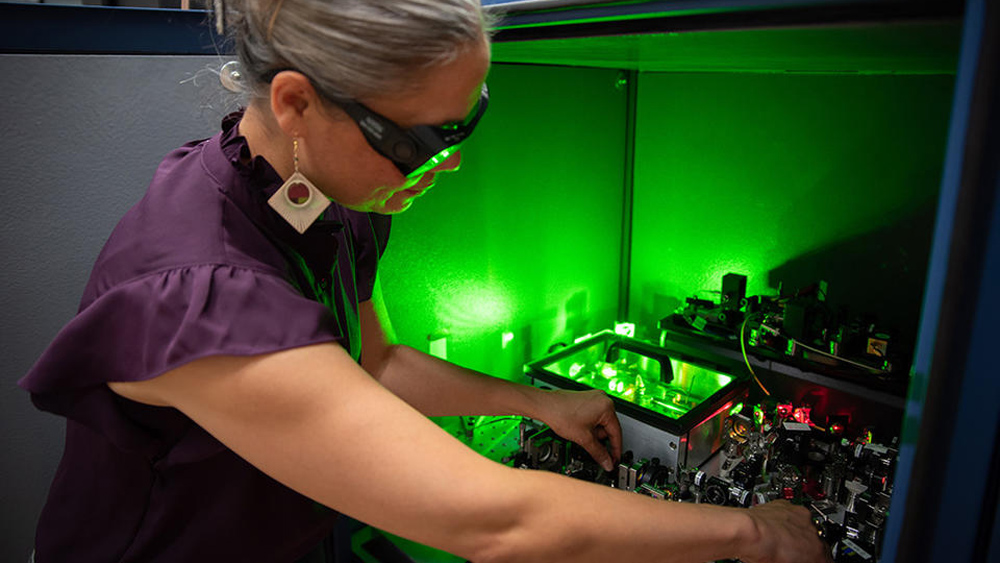
NIST researcher Tara Fortier aligns optics to maximize the signal coming from an optical clock. The signal is measured by a frequency comb. Credit: R. Wilson/NIST
Recently, you’ve probably seen the word quantum used everywhere—in computing, in names for tech companies, and maybe even for explanations of love and consciousness.
|
ADVERTISEMENT |
So what is quantum? What is quantum technology? And is it worth all the hype?
First of all, what is quantum?
Quantum, often called quantum mechanics, deals with the granular and fuzzy nature of the universe and the physical behavior of its smallest particles.
The idea of physical granularity can be understood with your TV image. If you zoom in on the image, you’ll see it’s made of individual pixels. The quantum world is similar. If you zoom in on the details of matter, you’ll eventually see elementary units of matter and energy with their own unique characteristics.
In the physical world, matter is made up of atoms as building blocks. Atoms, in turn, are made up of electrons that surround a nucleus. Nuclear particles, such as protons and neutrons, are made up of quarks.
…
Add new comment